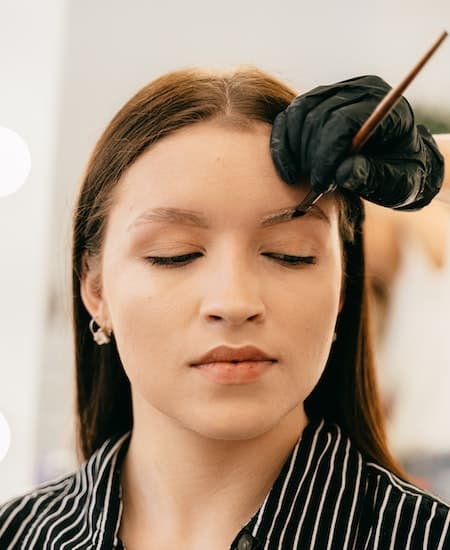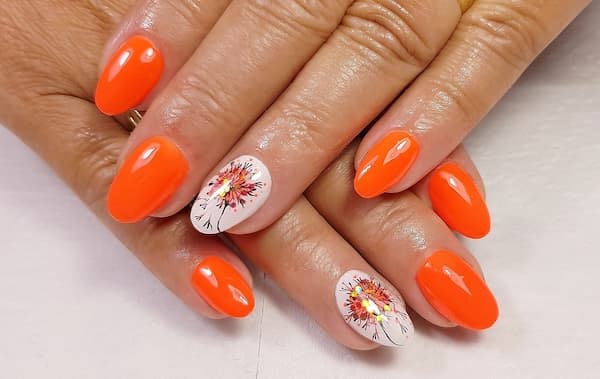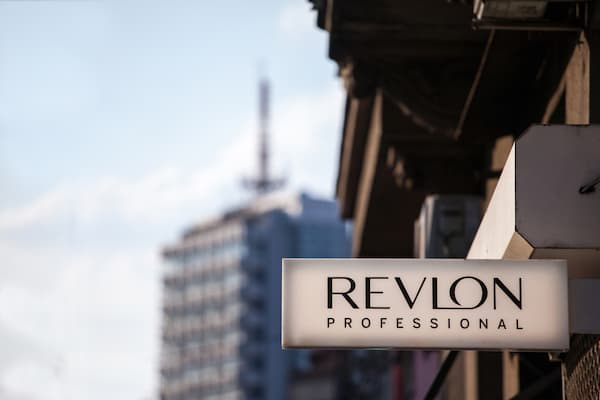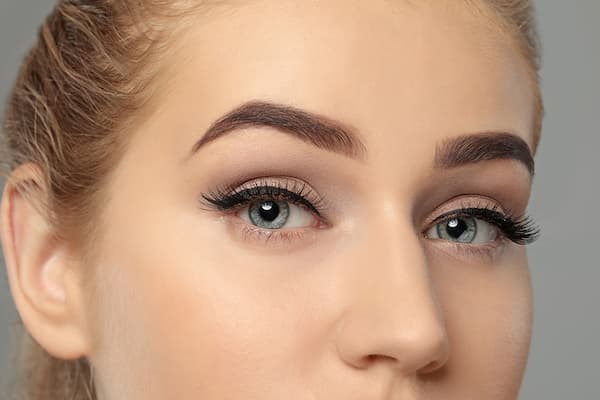Chemical Peels Vs Dermaplaning: How are they different?
When it comes to popular skincare treatments, dermaplaning and chemical peels are high on the list.
Both of these exfoliation methods result in smooth and radiant-looking skin by boosting cell turnover, increasing collagen production, and improving skin texture and imperfections such as dark spots, sun damage, and acne scars.
While both of these treatments offer great benefits – and fairly immediate results – there are a few key differences between them that are important to consider.
In this post, I’ll outline those differences, explain each procedure in detail, and answer the most common questions so that you can decide which treatment to add to your skincare routine.
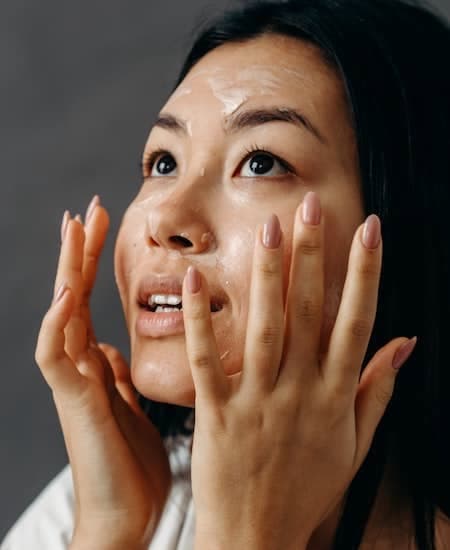
Physical Exfoliation vs Chemical Exfoliation
Before we get into the differences between dermaplaning and chemical peels, we have to discuss the difference between physical and chemical exfoliation.
You might be thinking, “What does that have to do with dermaplaning and chemical peels?”
Well, with both of these treatment procedures exfoliation is actually the key to unlocking the smooth, glowing complexion and youthful appearance we’re after. Exfoliation is the process of removing dead skin cells from the top layer of the skin.
There are two main types of exfoliation: physical and chemical.
Physical exfoliation simply refers to exfoliating using products or methods such as scrubs, brushes, or other mechanical methods to physically remove skin cells. While extremely popular, this method of exfoliation can be damaging to your skin if done too frequently or if too much pressure is used.
Chemical exfoliation, on the other hand, uses acids like alpha hydroxy acids (AHAs) or glycolic acid and beta hydroxy acids (BHAs) or salicylic acid to dissolve dead skin cells on the skin’s surface.
Additionally, peels can range from light peels to deep peels and can be easily tailored to your specific skin type which makes them a great choice for a wide variety of skin types.
So which one is better, physical or chemical exfoliation?
It really depends on your skin type and preferences. Some people love the instant gratification of physical exfoliation, while others prefer the low-maintenance ease of using chemical exfoliants.
Regardless of which one you opt for, regular exfoliation is a great way to achieve a radiant complexion, especially if you’re doing a deep exfoliation.

Dermaplaning
Dermaplaning is a type of physical exfoliation. The skincare treatment involves using a special tool, similar to a surgical blade or medical-grade scalpel, to gently remove the top layer of dead, dull skin cells and peach fuzz (the fine hair) from your face.
This process is often referred to as “shaving your face” however, instead of just getting rid of unwanted hair, you’re also getting rid of all the gunk that’s been building up on your skin. And the best part? It’s a completely painless treatment!
Not only does a dermaplaning treatment leave with you fresh skin that feels ridiculously smooth, but by getting rid of all that dead skin and facial hair, you’re allowing your other skincare products to penetrate more deeply and do their job more effectively.
Another added benefit is that dermaplaning can also help reduce the appearance of fine lines and wrinkles, make your pore size appear smaller, and can help your makeup go on more smoothly.
This is an easy and great way to get a more even skin tone while also improving the texture of your skin.
There are a few things to keep in mind, however, before you try dermaplaning. First of all, while it can be done at home it’s recommended to go to a licensed esthetician who knows what they’re doing. And secondly, while dermaplaning is generally safe for most people, there is a small risk of nicks or cuts if you’re not careful.
How often should you get dermaplaning?
The frequency of dermaplaning depends on your skin type and personal preferences. Some people prefer to get dermaplaning every three to four weeks to maintain a consistently smooth and glowing complexion, while others may only do it once every six to eight weeks.
It’s always best to consult with a licensed esthetician to determine the best dermaplaning schedule for your individual skin type and needs.

Chemical Peels
Now, let’s talk about chemical peels – truly the OG of exfoliation treatments. Chemical peels use a chemical solution (such as glycolic, salicylic, or a lactic acid solution) to dissolve the top layer of dead cells, revealing the fresh, glowing, and healthy skin beneath.
Chemical peels can be a great way to give your skin a deep clean and improve its overall texture and appearance. Plus, they can help reduce the appearance of acne scars, hyperpigmentation or dark spots, age spots, and other pesky skin issues.
Before you schedule your next chemical peel, it’s important to know that not all chemical peels are created equal. There are different types of peels with varying strengths, so you’ll need to choose the right one for your skin type and specific concerns.
And while chemical peels are safe for most people, the expected side effects can cause some temporary redness, flaking, or peeling – so it’s recommended that you schedule your peel for a time when you can avoid any sun exposure and don’t have any big events coming up.
In general, the results are totally worth it! After a chemical peel, your skin will certainly be smoother, brighter, and more even-toned than before.
Different Types of Chemical Peels
Chemical peels can be customized to your skin type and specific needs based on the strength of the acid used. These medical grade peels can range from gentler, light peels to deeper peels that use higher strength acids, Here a few popular types of peels:
- Glycolic Peel: This is one of the mildest types of chemical peels and is great for treating fine lines, acne, and uneven skin tone. It works by exfoliating the surface of the skin and stimulating collagen production.
- Salicylic acid peel: This type of peel is best for those with oily or acne-prone skin. It works by penetrating deep into the pores to remove excess oil and unclog pores, which can help reduce the appearance of active acne.
- Lactic acid peel: Lactic acid is a gentle alpha-hydroxy acid that’s great for those with dry or sensitive skin. It works by exfoliating and improving skin hydration.
- Jessner’s peel: This is a medium-strength peel that’s great for treating acne, dark spots, and sun damage. Active ingredients include lactic acid, salicylic acid, and resorcinol, which can penetrate deeper into the skin to stimulate collagen production.
- PCA peel: This is one of the most popular of the deep chemical peels and is best for treating more severe skin concerns, such as deep wrinkles, scars, and cystic acne. It works by penetrating deep into the skin and causing controlled damage, which stimulates the skin’s natural healing process and promotes new collagen growth. TCA peels are stronger peels similar to PCA peels, though not as deep.
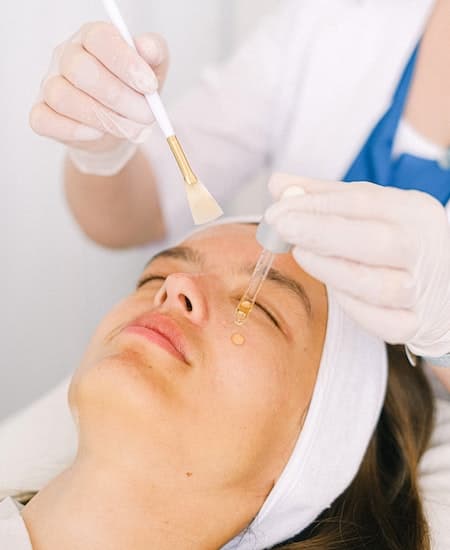
Dermaplaning vs Chemical Peel
Differences Between Dermaplaning Vs Chemical Peel
Is dermaplaning or chemical peels better for your skin?
Now that we’ve covered the basics of dermaplaning and chemical peels, you might be wondering – which one should I choose? Well, once again, the best way to determine that is to take your skin type and skin concerns into account.
If you’re looking for a gentle way to exfoliate and get rid of peach fuzz, dermaplaning is a good option. It’s quick with virtually no recovery time, painless, and leaves your skin feeling soft and smooth. Plus, it can help your other skincare products work better by allowing them to penetrate more deeply.

Another great aspect of dermaplaning is that you can actually try it at home. There are many affordable dermaplane tools you can purchase to try for yourself before scheduling an appointment.
This pack of dermaplaning tools is popular amongst many women who love to do their own dermaplaning at home.
On the other hand, if you’re dealing with more serious skin issues like acne scars or hyperpigmentation, a chemical peel might give you better results. Chemical peels can be more powerful than physical exfoliation methods and can target specific skin concerns.
To help make your decision of which skin care treatment you should choose first. Here are some of the major differences:
- Exfoliation Type – Dermaplaning is a physical exfoliation method whereas chemical peels are considered a chemical exfoliation.
- Invasiveness – Dermaplaning is a completely non-invasive treatment that’s safe for all skin types and can be done regularly. Chemical peels are more invasive and typically require more downtime between treatments.
- Skin Needs – Dermaplaning is great for improving the texture and tone of the skin, as well as reducing the appearance of fine lines and wrinkles. Chemical peels are better for treating acne, hyperpigmentation, and other more severe skin conditions.
- Skin Type – Dermaplaning is a great option for those with sensitive skin, as it doesn’t involve harsh chemicals that can irritate or inflame the skin. Chemical peels can be more intense and may not be suitable for those with sensitive skin. With sensitive skin, however, you always have the option to stick to gentler methods like enzymatic exfoliation (which uses fruit enzymes to dissolve dead skin) or gentle acids like PHAs.
- Intensity – Dermaplaning is a more superficial treatment that primarily works on the outermost layer of the skin. Chemical peels can penetrate deeper into the skin to stimulate collagen production and improve overall skin health.
- Add-on Treatments – Dermaplaning can be combined with other treatments, such as facials or masks, to enhance the results. Chemical peels should not be combined with other exfoliating treatments, as they can be too harsh on the skin.
Chemical Peel & Dermaplaning Costs
A chemical peel cost ranges depending on several factors including the type of chemical peel as well as the location. Don’t be surprised to see chemical peels in one location be several hundred or even thousands more than in another location.
The average cost for a chemical peel ranges from approximately $150 to $500.
Dermaplaning is typically a bit less than chemical peels coming in at around $150 per treatment.
FAQ’s
Should I dermaplane or chemical peel first?
If you’re interested in both treatments, it’s usually best to start with dermaplaning and then wait at least a week before doing a chemical peel. This will give your skin time to fully heal and avoid any potential complications or adverse reactions.
However, it’s always a good idea to consult with a skincare specialist to determine the best treatment plan for your individual needs.
Can you do dermaplaning and chemical peel together?
Combining dermaplaning and chemical peel in the same session is generally not recommended, as both treatments are considered exfoliating and can be too harsh on the skin if done together. It’s best to space out these treatments and give your skin time to fully recover between them.
Do chemical peels get rid of peach fuzz?
While chemical peels are great for exfoliating and rejuvenating the skin, they are not designed to remove peach fuzz or vellus hair. Chemical peels work on dissolving the top layer of skin to exfoliate and reduce the appearance of skin impurities.
Dermaplaning offers the best results for removing peach fuzz as it’s specifically designed to do so.
Conclusion
When it comes to dermaplaning vs chemical peel, both are great options that can help with improving the appearance of your skin.
While chemical peels are great for exfoliating and rejuvenating the skin, they’re not recommended for removing peach fuzz. On the other hand, dermaplaning is specifically designed to remove vellus hair as well as dead skin cells, leaving your face smooth and glowing.
At the end of the day, the best treatment for you will depend on your individual skin type and needs. Whether you’re looking to get rid of peach fuzz, reduce the appearance of fine lines, or simply give your skin a healthy glow, it’s always best to consult with skincare experts to determine the best treatment plan for you!
